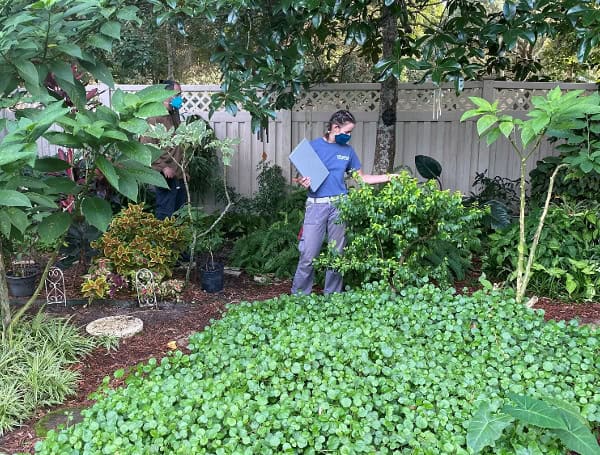
When you look at your yard, you probably see a few plants such as grass, shrubs and trees. But you might not notice all the species.
New University of Florida research shows far more plant species in urban landscapes than meet the eye, and this makes scientists more interested in learning about the potential benefits of this unrecognized plant diversity.
Plant diversity is critical because biological diversity is declining in landscapes around the world, said Basil Iannone, who supervised the research. Kacey Russo, who has graduated from the UF/IFAS College of Agricultural and Life Sciences, led the study as an undergraduate.
Read: Florida Agriculture Commissioner Simpson Restricts Cattle Imports
“Some people view yards as having low ecological value; however, residential landscapes may actually have the potential to support high biodiversity,” Russo said. “Some people strive to maintain a single species turfgrass lawn. But lawns with high biodiversity, such as some that we found in our study, may contribute to an urban ecosystem by supporting wildlife such as birds and pollinators. This is especially important, considering urbanization is greatly expanding, and we are losing natural areas in Florida.”
These days, many lawns are planted with one variety of a given turfgrass species, but that genetic uniformity makes them more vulnerable to pests and diseases.
In addition, more diversity in lawns may sustain their benefits because they need fewer resources – including water and fertilizer — for maintenance.
For the study, UF/IFAS researchers examined 30 yards in four Gainesville neighborhoods and found at least 500 plant species in an initial survey and 173 in a follow-up – nearly 700 types of plants in only 30 yards.
Scientists derived their numbers after they asked property owners, “How many types of plants are in your yard?” Then researchers examined the yards to see what plants were actually present in the yards and compared the actual and perceived number of species.
Of the 500-plus types of plants scientists found, 360 are what they call “non-lawn species,” 104 are lawn species, and 36 grew in both lawns and non-lawn areas.
Read: Segrest Farms’ Sandra Moore Wins 2024 Woman Of The Year In Florida Agriculture
“Lawn plants grow in lawns and can handle what we do in lawns, for example, mow and walk on them,” said Iannone, a UF/IFAS associate professor of landscape ecology in the School of Forest, Fisheries, & Geomatics Sciences. “Turns out there are a lot of plant species other than grasses growing in our lawns. They go unnoticed as they are small and literally stepped on.”
The highest percentage of homeowners (11 out of 30) thought they had from 20 to 40 plant species in their backyards. Most residents (13 out of 30) thought they had 10 to 20 plant species in their front yard. Meanwhile, researchers found up to 47 lawn species and 50 non-lawn species in backyards, and up to 50 lawn species and 37 non-lawn species in front yards.
The study also found that of all the species found in lawns over half of them are native to Florida. This shows the potential for Florida lawns to support native biodiversity, Russo said.
“This study shows that when people think about plants in their yard, they are more likely to be considering the non-lawn landscaping plants,” she said. “Our yards have many plant species, but we tend to overlook them. People can support healthy residential landscapes by appreciating and supporting the native biodiversity that already exists in their yards.”
Help support the Tampa Free Press by making any small donation by clicking here.
Android Users, Click To Download The Tampa Free Press App And Never Miss A Story. Follow Us On Facebook and Twitter. Sign up for our free newsletter.
